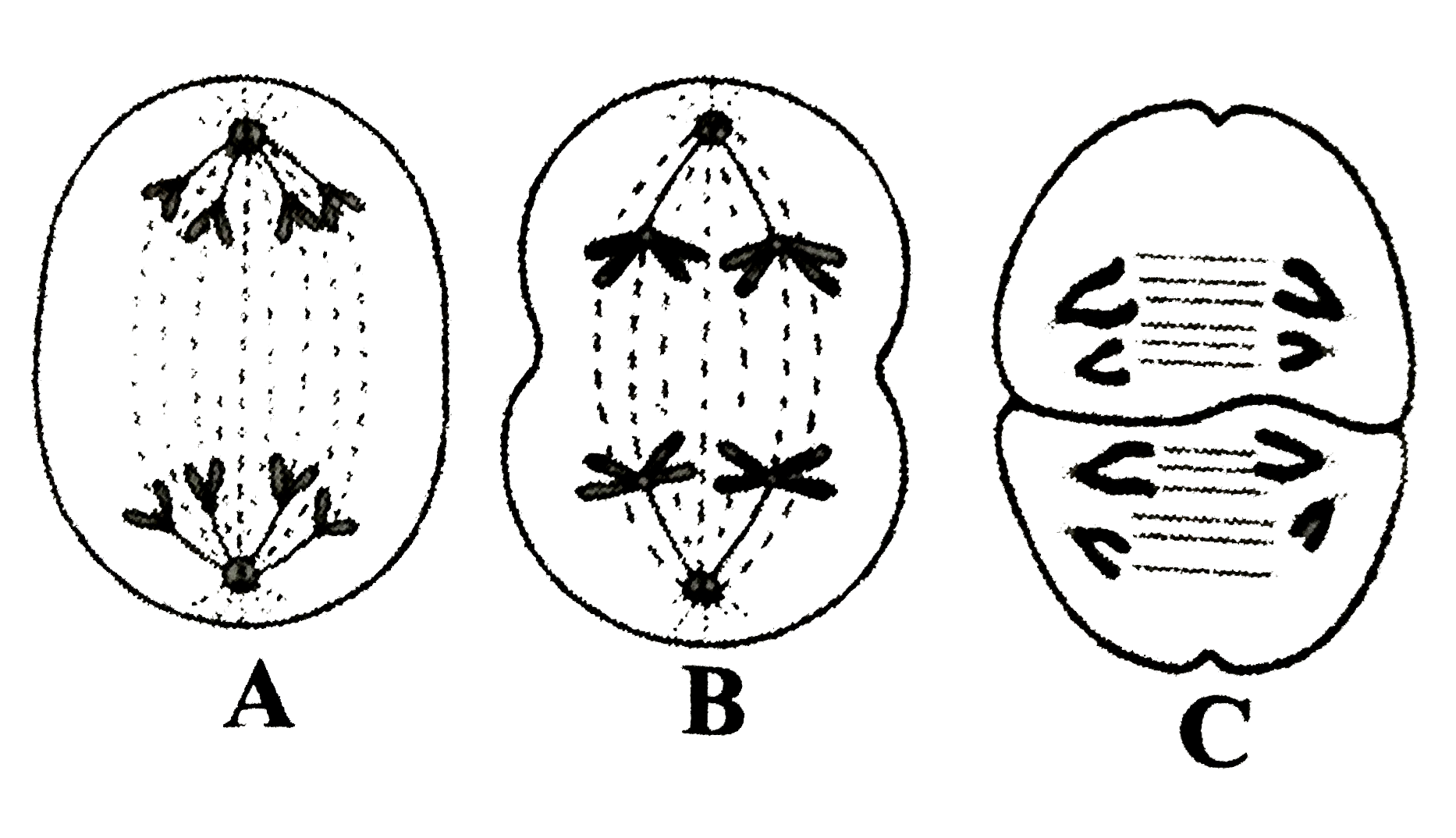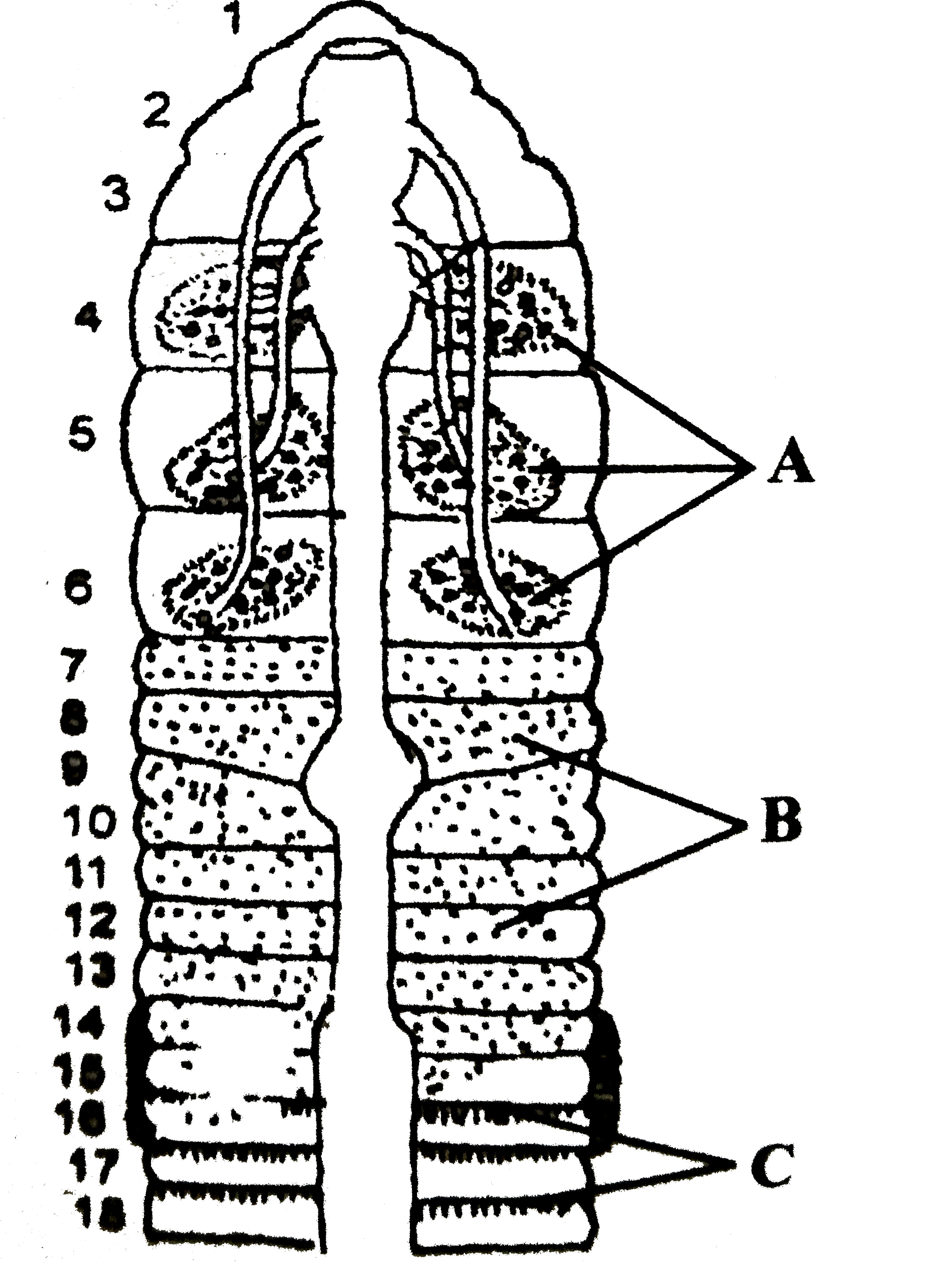Refer to the given table that summarises the interactions between two organisms (organisms 1 and organism 2). Identify the types of interaction (A,B and C) and select the correct answer.

(i) A can be either predation or parasitism.
(ii) B can be either commensalism or amensalism.
(iii) C can beamensalism.
(iv) A can be amensalism.
(i) and (ii)
(ii) and (iii)
(iii) and (iv)
(i) and (iii)
The correct Answer is:D
A can be either predation or parasitism since one species is harmed and the other is benefitted. B is commensalism since one species is benefitted and other has no effect no it. C ca be amensalism since one species is harmed and the other has no effect on it.
Topper's Solved these Questions
- BOOK - NCERT FINGERTPS ENGLISHCHAPTER - ORGANISMS AND POPULATIONEXERCISE - HOTS5videos
ORGANISMS AND POPULATION
- BOOK - NCERT FINGERTPS ENGLISHCHAPTER - ORGANISMS AND POPULATIONEXERCISE - NCERT20videos
ORGANISMS AND POPULATION
- BOOK - NCERT FINGERTPS ENGLISHCHAPTER - MOLECULAR BASIS OF INHERITANCEEXERCISE - Molecular Basis Of Inheritance151videos
MOLECULAR BASIS OF INHERITANCE
- BOOK - NCERT FINGERTPS ENGLISHCHAPTER - PRACTICE PAPERSEXERCISE - Practice paper150videos
PRACTICE PAPERS
Similar Questions
The interaction between two living organisms of different species which is beneficial to both but is not obligatory because they can live without each other is known as
View SolutionThe interaction between two living organisms of different species which is beneficial to both but is not obligatory because they can live without each other is known as
View Solution
Knowledge Check
- Question 1 - Select One
Refer to the given table. If '+' sign has been assigned for beneficial interaction, '-' sign for detrimental interaction and '0' for neutral interaction, identify the type of interaction (i),(ii) and (iii) and select the correct option.
SpeciesSpecies BType of interaction−−(i)+−(ii)+0(iii)A(i)(ii)(iii).PredationParasitismAmensalismB(i)(ii)(iii).CompetitionPredationCommensalismC(i)(ii)(iii).CompetitionParasitismCommensalismDBoth (b) and (c) - Question 2 - Select One
If 2n=4, then identify the figures A,B and C, as per the following codes and select the correct option

Anaphase of meiosis I=(i)
Anaphase of mitosis =(ii)
Anaphase meiosis II =(iii)Aii,i,iiiBiii,ii,iv,iCi,ii,iiiDiii,i,ii - Question 3 - Select One
The figure showing nephridial system of earthworm is given here. Identify the types of nephridia labelled as A, B and C from the list (i) to (iii) given below and select the correct option

(i) Septal nephridia
(ii) Integumentary nephridia
(iii) Tufts of pharyngeal nephridiaAA B C(ii) (i) (iii)BA B C(iii) (ii) (i)CA B C(ii) (iii) (i)DA B C(i) (ii) (iii)
Refer to the periodic table given in your book and now answer the following questions:
a. Select the possible non metals that can show disproportionation reaction.
b. Select three metals that can show disproportionation reaction.View SolutionSelect the correct answer from the following for DNA can be
1. A-DNA 2. B-DNA
3. Z-DNA 4. Y-DNA.View Solutionif (log)ax=b for permissible values of a and x then identify the statements which can be correct. (a) If a and b are two irrational numbers then x can be rational (b) if a is rational and b is irrational, then x can be rational (c) if a is irrational and b is rational, then x can be rational (d) If a and b are two rational numbers then x can be rational .
View SolutionWhich of the following statements regarding viruses are correct?
(i) These are cellular, infectious, nucleoprotein particles.
(ii) They can be grown in culture medium.
(iii) Genetic material is either DNA or RNA, but never both.
(iv) They can be crystallised.View SolutionGiven figure represents a pyramid of biomass in an aquatic ecosystem.

Identify A and B and select the correct answer.
(i) A is the crop which supporsts and B is the crop which is supported.
(ii) A is the crop which is supported and B is the crop which supports.
(iii) A is phytoplanktons and B is zooplanktons.
(iv) A is zooplanktons and B is phytoplanktons.View Solution

